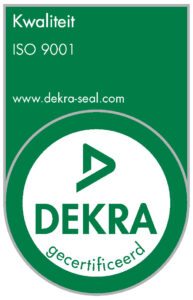Phased Array Antennas & The Roadmap to 5G Wireless
As the market and media hype around 5G continues to grow, there is a tacit acknowledgement that we have miles to go before 5G becomes a reality. Initial industry standards for 5G aren’t expected to be ratified until Summer 2018 at the earliest, and there are many regulatory issues and a myriad of technology challenges still to be resolved before 5G is ready for mainstream commercialization.
Yet, despite these daunting challenges, the promised benefits of 5G are so profound that one can’t help but get excited about it. Improved mobile phone connectivity is just the tip of the iceberg when one considers 5G’s implications for transportation, industrial and entertainment applications, among many others.
MIMO vs Massive MIMO
Achieving the promise of 5G will require, among other things, major innovations in the way basestations are architected. Today we rely on multiple input, multiple output – or MIMO – antennae configurations to multiply the capacity of antennae links for wireless basestations. These antennas provide the ability to concentrate signal strength into smaller areas of space, boosting overall efficiency and throughput by guiding the signal to the precise location it’s needed. By adding additional antennas, this beamforming capability is improved.
But whereas conventional basestations may house between two and eight antennas, 5G basestations will need anywhere from 64 to hundreds of antennas arrayed in a “massive MIMO” configuration to provide the requisite data rates. This phased array antennae design comprises an active electronically scanned array (AESA), which enables signals to be electronically steered with much greater beamforming precision than MIMO can support today.
High-Performance, Low Cost Active Antennas
When it comes to the architecture and assembly of massive MIMO 5G systems, we see many parallels with the new generation of Multifunction Phased Array Radar (MPAR) active antennae systems targeted for use for military and civil air traffic control, and weather system tracking applications. And while you might not typically associate this class of radar system with cost-sensitive commercial applications like 5G, you might be surprised to learn that MPAR technology leverages design and manufacturing efficiencies that dramatically reduce the cost of the end system.
First generation MPAR systems feature an array of Scalable Planar Array (SPAR™) Tiles in a flat panel configuration comprised of hundreds to thousands of active antennas. SPAR Tile technology, developed in a collaboration between MACOM and MIT Lincoln Laboratory, embodies a new cost-conscious approach to phased array radar system development, leveraging highly-integrated antenna sub-systems, and volume scale commercial packaging and manufacturing techniques.
To learn more about the benefits of MPAR technology for 5G, check out this article in Microwave Product Digest. For a deep-dive read on the MPAR technology architecture, head over to Microwave Journal.

 HITECH
HITECH